This article is prepared to celebrate the beauty, vitality and diversity of yellow in nature.
Are you ready?
Then let's explore this colorful world!
Flowers
Tulipa fosteriana

Tulipa fosteriana is an exotic tulip species natively found in regions such as Afghanistan, Kyrgyzstan, Tajikistan, and Uzbekistan. Adding color and energy to your gardens, these gorgeous tulips are eye-catching with their large red flowers and striking deep purple anthers.
Sunflower

Sunflower (Helianthus annuus) is a colorful and energetic plant famous for its tall height and huge flower heads. Although the idea that sunflowers follow the sun is misleading, young flower buds move from sunrise to sunset throughout the day.
Interestingly, the florets on the heads of these beautiful flowers are mathematically located at the golden angle, which provides the most efficient seed packing.
Yellow coneflower
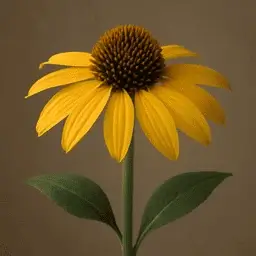
Notable for its yellow petals and spiny central head, the yellow coneflower (Echinacea paradoxa) grows naturally, especially in the southern regions of the Americas.
This beautiful plant is threatened in some areas and there are varieties with different colored petals. Found in areas such as limestone cliffs and sunny hills, these flowers adorn the surroundings in May and June.
The yellow coneflower is a colorful and durable gift of nature!
Yellow iris
Yellow iris (Iris pseudacorus) is a plant native to Europe, Western Asia and Northwest Africa with its striking yellow flowers.
This plant, which is often found in wetlands, is also grown as an ornamental plant thanks to its showy flowers.
This beautiful flower, called fleur-de-lis, grows best in wet conditions and spreads quickly, filling similar niches as Typha.
Marigold
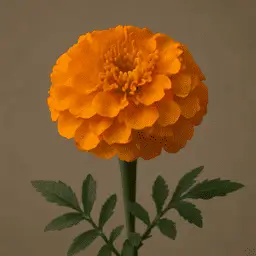
Avoid scorpions and meet Tagetes! This beautiful ornamental plant, also known as marigold, blooms in gold, orange, yellow and white.
This plant, which is of Mexican origin, keeps some insects away thanks to its smell and is often used in gardens alongside vegetables such as tomatoes and eggplants.
Evening-primroses
Evening-primroses, also known as daytime beauties, is a dazzling plant species originating from America with its colorful flowers. Flowers that open in the evening can sometimes open in less than a minute.
Interestingly, these plants increase the sugar content in their nectar by hearing the bees' wings.
These unique plants can decorate your garden with a riot of colors and attract everyone's attention.
Nelumbo lutea
Nelumbo lutea, also known as the American lotus, is an aquatic plant with dancing leaves and white to pale yellow flowers.
This plant, which offers both a visual feast and can be used in various dishes, grows in ponds and wetlands and creates a natural ornament.
Freesia
Freesia is a very colorful ornamental plant originating from South Africa and famous for its fragrant flowers.
While these stunning flowers are often used in wedding bouquets, they also appear in hand creams, shampoos and candles thanks to their impressive scent. Freesias create an eye-catching ambiance by adding color and fragrance.
Yellow azalea
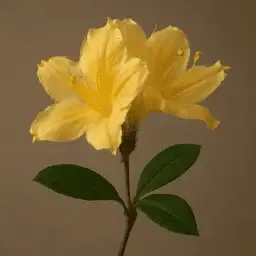
Yellow-flowered and strong-smelling Yellow azalea is one of my favorite yellow-flowered plants! It is an elegant herb that is found naturally in parts of Europe and Asia.
Popular in ornamental gardens, this herb contains nectar toxic to honeybees and has historically caused cases of toxic honey.
Chrysanthemum
Chrysanthemum flowers are known for their elegant and attractive appearance. Native to East Asia and Northeast Europe, these plants are famous for their large number of garden varieties and cultivars. Its name from Greek means "golden flower" and it is ready to enchant you with its beauty.
Narcissus
Narcissus is a beautiful and cute plant from the Amaryllidaceae family, which is the herald of spring, attracting attention with its colorful and showy flowers.
These flowers, which are usually found in white and yellow colors, add joy and vitality to your gardens.
Solidago
Solidago, commonly known as goldenrod, is a genus of flowering plants with about 100 to 120 species and belongs to the Asteraceae family.
These plants, which grow in different parts of the world, especially in North America, open eye-catching golden yellow flowers in autumn. Goldenrods are beauties loved by insects and bees, producing abundant nectar, usually in moist soils or in sunny weather.
Tickseed
Tickseed is the common name of the Coreopsis genus plants known for their colorful and striking flowers.
These plants, 75-80 species of which are native to the Americas, usually have yellow flowers and create an energetic atmosphere in gardens.
By choosing tickseed plants to add joy and movement to your garden, you can create a dazzling corner with their beauty.
Plants
Koelreuteria paniculata
Koelreuteria paniculata is an ornamental tree originating from eastern Asia, noted for its striking yellow flowers and interesting seed cones. This tree, which you can choose to add color and movement to your garden, is a popular landscape element around the world.
Laburnum anagyroides
Laburnum anagyroides, also known as Golden rain, is a dazzling ornamental tree with beautiful dangling golden yellow flowers. Originating from Central and Southern Europe, this tree creates an enchanting atmosphere in your garden in spring.
Golden barrel cactus
The golden barrel cactus is an interesting and popular ornamental plant native to Mexico. With its round shape and bright yellow spines, it is frequently found in gardens and collections.
Witch-hazel
Witch hazel is a beautiful ornamental plant with rich yellow and orange-red flowers in winter. Although its name has nothing to do with the witch, it got this name because of its flexible nature.
Forsythia
Forsythia is a type of shrub with bright yellow flowers belonging to the olive family, known as the harbinger of spring. This beautiful plant, mostly of Asian origin, is indispensable in gardens and a sign of nature's awakening.
Yellow Animals
Yellow warbler
Yellow Warblers are tiny birds with one of nature's most vibrant colors.
These lovely birds, with their 35 subspecies, are strikingly beautiful in various parts of North America and sometimes even on their migration routes to Europe.
These cheerful little ones are known for their greenish-yellow plumage and breasts decorated with reddish spots in some subspecies. Yellow warblers prefer to live in moist areas covered with small trees and dense woodland.
Atlantic canary
The Atlantic canary is a cute bird that resembles the sun with its energetic and cheerful plumage. These tiny birds, the natural symbols of the Canary Islands, come to life by singing chirping songs in tropical forests and parks. You should definitely listen to them!
Yellow dung fly
The yellow dung fly is an insect that attracts attention with its bright colors and interesting lifestyle. These flies, which reproduce in the feces of large mammals, play an important role in the breakdown of fertilizers in nature.
Banana slug
Notable for its banana peel-like color, the Banana Slug is an interesting species of snail that lives on the forest floors of North America.
Ranging in color from bright yellow to green and white, these intriguing creatures amaze for their gigantic size and ability to regrow their own tentacles. They offer both a surprise and a colorful world!
Yellow mongoose
The yellow mungo is a cheerful inhabitant of deserts and grasslands. Living in the colorful world of South Africa, this tiny creature lives in colonies in tunnels and dazzles with its energetic movements.
The yellow mungo, who loves termites, communicates with his friends by wagging his tail!
Yellow-bellied slider
The yellow-bellied turtle is a cheerful and cute reptile that lives in the southeastern United States.
Tiny monsters, especially the "S" shaped lines on their faces and "?" They are known for their patterns. These cute turtles enjoy aquatic and land life!
Yellowhammer
Yellowhammer, as the name suggests, is a cute bird species that attracts attention with its bright yellow head and whose song is depicted as "Some bread and no cheese".
Originally from Eurasia, this beautiful bird has also migrated to New Zealand and Australia. The yellow-headed chinte, which has three different subspecies, likes to live in wooded areas and travels in small flocks in winter.
Interestingly, the song of this colorful bird inspired famous composers such as Beethoven and Messiaen. Remember, if you encounter the yellow-headed chinte, you may have met a musical genius!
Yellow perch
Yellow perch is a freshwater fish native to most of North America and is noted for its colorful appearance. This creature, which is closely related to the European sea bass, is sometimes considered to be the same species as the European sea bass.
The lifespan of yellow perch is usually 9-10 years and their size varies between 10 and 25 cm. A record yellow bass was caught in New Jersey in 1865 and was exactly 46 cm tall! This freshwater fish record is still unbroken and is considered the longest-running record in North America.
Yellow bases undergo an interesting transformation during the breeding season, in which the red or yellow coloration of the males becomes prominent on their lower fins.
Clouded yellow
These butterflies, usually bright yellow, can be seen in many parts of Europe and migrate over a wide area from North Africa to the Middle East during the summer months.
Every year, during the so-called "clouded yellow years", they make mass migrations and breed intensively during these periods. Also, females grown under arid conditions may be pale cream in color instead of their usually yellow upper wings.
Although this species can be confused with other Colias species, it presents an eye-catching beauty with its elegant appearance and vibrant colour.
American goldfinch
The American yellow canary (Spinus tristis) is a small North American bird of the finch family. They migrate during the spring and autumn periods and breed during the summer months when food sources are most concentrated.
Males are bright yellow in summer and olive green in winter. The females are pale yellow-brown in summer and darker in winter. American yellow canary feeds on seeds, especially plants such as daisies and sunflowers that are highly adaptable to seeds.
They also feed and migrate in large flocks. It is among the bird species that feed in the gardens of the houses as a result of the decrease in their natural habitats.
Yellow tang
The yellow tang is a species of the Acanthuridae family and lives on coral reefs. It attracts attention with its bright yellow color and is a popular species for marine aquariums.
An adult yellow tang can reach 20 cm in length and 1-2 cm in thickness. At night, its yellow color becomes pale and a distinctive brown spot appears in the middle.
Yellow tangs usually eat algae, and males differentiate themselves by changing their color during the mating season. Their natural habitat is shallow cliffs in the Pacific Ocean. It is a protected species and not endangered.
Yellow boxfish
The yellow boxfish gets its name from its box-shaped body. This coral reef fish species is found in the Pacific and Indian Oceans and the southeast Atlantic Ocean.
The yellow boxfish, a poisonous fish, releases tetrodotoxin, which can be fatal to other fish in its environment when stressed or injured.
The color of old mature fish can vary from pale yellow to blue-gray or even black. In 2006, Mercedes-Benz designed the "Bionic" concept vehicle inspired by the yellow box fish.
Yellow-headed blackbird
The yellow-headed Blackbird is a large yellow-headed snapper that lives in wetlands in Canada and the United States. They migrate to the southwestern United States and Mexico during the winter and migrate in large flocks with other bird species.
During the breeding season, males are very aggressive in swamps to protect them from other birds.
Their populations depend on the health status of the wetlands in which they live. In particular, pesticides and irrigation projects can severely affect their populations.
European paper wasp
The European paper wasp is one of the most common and recognized of the social hornet species in the genus Polistes.
Unlike many Polistes species, their feeding habits are more diverse and, thanks to this feature, they have the advantage of surviving more than other hornet species in times of resource shortage.
The superior survival characteristics of the European paper wasp include its productive colony cycle, short developmental period, and ability to withstand high predatory attacks.
Yellowjacket
Yellowjacket is the common name for hunter social wasps belonging to the genera Vespula and Dolichovespula in North America. In other English speaking countries they are known as "bees".
Black and yellow are the most common and play an important role in hunting pests.
They live in colonies and consist of the queen, workers and males. Queens come out on warm days and build nests and raise workers by feeding their young.
Workers are responsible for colony defense, nest expansion, and food gathering. Colonies die in autumn and queens overwinter and establish new colonies in spring.
Saffron finch
Saffron finch is a bird that lives in South America and is usually seen in open and semi-open areas. Its males are distinguished from other yellow finches by a bright yellow color and an orange crown.
They breed mostly in tree hollows, using nests emptied by weaving birds.
Their beautiful but repetitive songs and pleasant appearance have resulted in them being kept as cage birds in many places. Males mating with two females are used for blood sports.
Yellow-footed tortoise
The yellow-footed tortoise is a species native to the Amazon basin. It is the sixth largest tortoise species in the world after the Galapagos tortoise, and one of its largest specimens is a 94 cm long female individual. They are famous for their hard shell, slow movement and long lifespan.
Prothonotary warbler
The Prothonotary warbler is a small songbird of the New World starling family. Its name was given because of its plumage, similar to the robes of papal scribes, called prothonotaries in the Roman Catholic Church.
Did you know that this bird is the only eastern songbird to nest in natural or artificial burrows and their numbers are declining due to habitat loss?
Yellow anaconda
The yellow anaconda is a species of boa endemic to southern South America. While it is one of the largest snakes in the world, it is smaller than the green anaconda.
Except for the crab-eating fox, jaguar, and humans, it has almost no predators. Their biggest prey are deer, capybara and wild boar. The banks of slow-flowing rivers, swamps and marshes are the preferred habitats of the yellow anaconda.
The import, transport, and sale of this species has been banned in the US since 2012 to prevent the yellow anaconda from becoming an invasive species in areas such as the Florida Everglades.
Yellow-banded poison dart frog
Scientists discovered that this little frog, like other species, is poisonous. Even one touch can be deadly!
But its colorful and attractive appearance has made it popular for aquarium hobbyists. In the wild, these frogs live in South America, living in rainforests and close to fresh water sources.
Golden trout
The golden trout is a native breed of California. The gold color is covered with red bands and black spots on the sides. They become about 30 cm long and live in cold mountain lakes.
Their populations are threatened by alien species and overfishing. Since 1947, the golden trout has been California's official freshwater fish.
Golden poison frog
The golden poison frog is a species of poison dart frog that lives in the Colombian rainforest and is considered one of the most venomous animals in the world for its size.
Despite being only 6 cm long, it can be deadly due to the toxins in his body. Its golden color indicates its predators as a warning against toxins.
The species is among the endangered species as its natural habitats have been destroyed.
Yellow Foods
Lemon
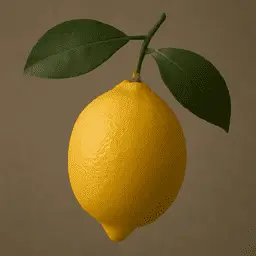
Lemon is one of the most popular fruits in the world and a versatile fruit used in the kitchen and cleaning.
It is not known exactly where the lemon, originally from Asia, was grown, but the earliest sources point to Northeast India, northern Myanmar or China.
Lemon juice has the highest citric acid content of any citrus fruit and is used for cleaning as well as food.
Golden Delicious
Golden Delicious is an apple variety. It is among the 15 most popular apple varieties in the USA. J.M. It was discovered by accident on Mullins' farm in West Virginia.
It was first released by Stark Brothers Nurseries as a companion to Red Delicious. Because of its sweet taste and high pectin content, Golden Delicious is among the best apple varieties for apple pie making, among which it is among the ancestors.
It is West Virginia's official state fruit and the Golden Delicious Festival is held every year.
Canary melon

Canary melon is a citrus-colored type of melon. This fruit, which is whitish green inside and shaped like a pear, has a sweet and slightly sour flavor.
The peel has a slightly waxy texture as it matures. It takes its name from the canary, a small bird with orange plumage.
Yellow kiwi
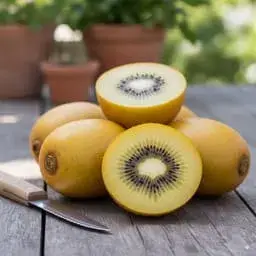
Yellow kiwi or golden kiwi, is a type of fruit native to China. It is sweeter and aromatic and can be consumed without peeling.
It is usually green or golden yellow in color. There are commercial varieties such as Hort16A, Zespri Gold and SunGold.
In New Zealand, the Hort16A variety has suffered losses due to PSA bacteria, but the more resistant variety Zesy002 remains in demand. There is also a variety with a red iris in the center of the fruit.
Yellow dragon fruit

Yellow Dragon Fruit is a cactus species famous for its large flowers. This plant, which grows in northern South America, is grown commercially for its yellow fruit. Its fruits are thorny, unlike other pitahaya species.
Pineapple
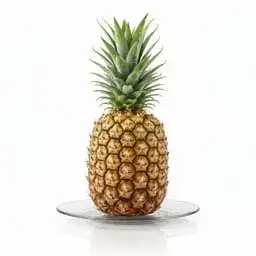
Pineapple is a tropical plant native to South America, an edible fruit. Native to South America, the pineapple was introduced to Europe in the 17th century and became a symbol of luxury.
Pineapple grows as a multiple fruit formed by the union of 200 flowers.
Banana
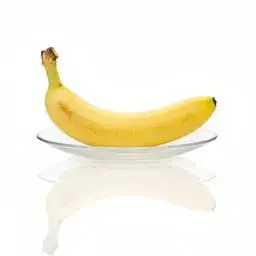
Banana is a tall, edible fruit produced by several large herbaceous flowering plants in the genus Musa, which is botanically a strawberry. Although it varies in size, color, and firmness, it usually has soft starchy flesh and a green, yellow, red, purple, or brown rind when ripe.
Worldwide, there is no sharp distinction between "bananas" and "plantains". Bananas are commonly known as sweet, soft, sweet bananas, while "plantains" are known as the harder, starchy fruity Musa varieties.
Papaya
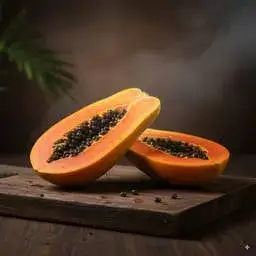
Papaya is a fruit tree cultivated in southern Mexico and Central America. Its fruit is large, sweet and orange in color. The black seeds inside make this fruit even more interesting.
Pear
Cultivated all over the world, the pear is a fruit harvested at the end of summer. The pear tree is medium sized and grows in coastal and temperate regions of Europe, North Africa and Asia.
Passiflora edulis
Passiflora edulis, passion fruit, a sweet, stone fruit from southern Brazil, is grown in tropical and subtropical regions. There are two main varieties: purple-fruited edulis and yellow-fruited flavicarpa.
The taste of the fruit is slightly acidic and can be compared to guava fruit.
Carambola
Carambola, or star fruit, is the fruit of Averrhoa carambola, a tree species native to Southeast Asia. It is famous for its star-shaped cross section. It is grown in tropical and subtropical regions. It is also edible with its seeds and is used to make garnishes, jams and juices. However, excessive consumption by those with kidney disease can cause health problems.
Cape gooseberry
Cape gooseberry is a small fruit with a bright yellow to orange color and a sweet, tart flavor. It's native to Chile and Peru, and has been cultivated since the Inca Empire.
The fruit is enclosed in an inflated, papery calyx, which gives it a unique appearance.
Despite its name, it's not related to true gooseberries. It's now cultivated and grows wild in temperate and tropical regions around the world.
Pepino
Pepino is a plant species native to South America. Its fruit, which has a very delicate structure, is similar in taste to a mixture of melon and cucumber.
It was used as a decorative motif on ancient pottery in the Moche valley. Pepino, which has become a popular fruit in Japan, Europe and North America, is also a suitable plant for greenhouse production.
Ribes aureum
Ribes aureum is a shrub native to North America. It has common names such as golden currant, clove currant, pruterberry, and buffalo currant.
Golden zucchini
Golden zucchini unlike ordinary zucchini, its skin color is a mixture of orange-gold.
It is grown in the Netherlands and is especially popular in France. It is a nutritious vegetable with high vitamin C, potassium and fiber content.
Its flavor is similar to ordinary zucchini, but it has a different appearance. If you want to add color to your meals, it's worth a try!
Summer squash
Summer squash is known as summer squash. It is usually of the Cucurbita pepo species and is harvested while it is still immature. Unlike other zucchini, these zucchini have a short shelf life.
There are different types such as pattypan squash, crookneck squash, zucchini, and tromboncino.
Spaghetti squash
Spaghetti squash, or pasta squash, is a group of many cultivars of the subgenus Cucurbita pepo. With its fibrous structure, it separates into long strips like spaghetti when cooked.
They come in different colors and sizes and are a low-calorie, nutritious option. They can be grown in gardens or in pots and prepared with different cooking methods.
Crookneck squash
Crookneck squash is a variety of Cucurbita pepo. It is known for its yellow rind and sweet yellow flesh.
It gets its name from its "crooked neck". It is often used as a summer squash. It hardens as it grows, and should be collected when less than 5 cm in diameter. Yellow rind with or without bumps.
Apricot
Apricot is the fruit of several species in the genus Prunus. Its name comes from the Latin word "armeniaca" meaning "bare in the open".
It actually grows in China and Central Asia, but is widely grown throughout the world.
The world's largest apricot producer is Turkey. Apricots can have a sweet or sour flavor and are used in many dishes.
In addition, apricots are a healthy food and contain many nutrients such as vitamin A, fiber, potassium and antioxidants.
Fungi
Morchella esculenta
Morchella esculenta, is one of the most well-known of the edible mushrooms. Each fruit body is initially shaped like a compacted, gray sponge, and then becomes a large, yellowish sponge.
The fruit body merges with the stem at the lower edge and is hollow. It grows under hardwoods and coniferous trees, for a short time in the spring.
It can be grown in a laboratory setting for scientists to further study its development. Morel mushroom can naturally grow in a wide geography and is known as "May mushroom" in some places.
Chanterelle
Chanterelle mushroom is the common name for several mushroom species in the genera Chanterellus, Craterellus, Gomphus, and Polyozellus.
It has orange, yellow or white colors and is funnel shaped. The underside of most species has rounded, bifurcated layers under the flat cap. Many species emit a pleasant fruity scent and have a slightly peppery taste.
The aroma and flavor of Chanterelle mushrooms are counted among gourmet mushrooms, along with truffles and morels.
Yellow Rocks
Orpiment
Orpiment is an arsenic sulfide mineral and has a deep orange-yellow color.
Its Latin name comes from the words "aurum" (gold) and "pigmentum" (dye) because it is golden in color and was formerly used by painters.
Sulfur
Sulfur is a polyvalent nonmetal element with chemical symbol S and atomic number 16. Sulfur, a vibrant yellow crystalline solid at room temperature, is commonly found in nature as the sulfide and sulfate minerals.
Sulfur has been known since ancient times due to its use throughout history in India, Greece, China and Egypt. Today, nearly all elemental sulfur is produced as a byproduct of removing sulfur-containing pollutants from natural gas and oil.
Sulfur is used in the manufacture of fertilizers, pesticides, and fungicides. In addition, organic sulfur compounds found in various organic compounds are important for life.
Sea Creatures
Tubastraea
Tubastraea is a genus of corals with long tentacles for dolphins to prey on passing zooplankton during the night rather than basking in the sun.
These large polyp stony corals, which do not form reefs, colonize artificial surfaces and settle in deep waters.
They are hermaphrodites and produce offspring called planulas, and they can also reproduce asexually. However, some species are considered invasive and are harmful.
Hippocampus kuda
Hippocampus kuda, or seahorse, is a very cute fish and can be seen in many parts of the world. It is also highly valued in traditional Chinese medicine and is thought to regulate the nervous, reproductive and immune systems.
It is a popular species for aquarium hobbyists, but should not be kept with large and aggressive fish. Seahorses make their meals with small animals and have constant nutritional requirements.
And of course, the most notable feature of these cute creatures is that they use their tails and have little swimming ability.
Eunicella cavolini
Eunicella cavolini is a lithe lighthouse species and is known for its unusual shape. It is common in the Mediterranean and Ionian Seas. It also lives with other soft corals and uses its tentacles to hunt. It is a slow growing species and grows an average of 1-2 cm per year.
Others
Amber
Amber is fossilized tree resin and throughout history has been considered a precious stone for its natural beauty and color.
It has been used by scientists as a historical resource, as it may contain animal and plant materials.
Amber has been used as a healer in folk medicine as well as in jewellery. Also used since ancient times, amber may have been worked by ancient Italian peoples and may have come from deposits in Sicily. Amber originates from tree resin and has been considered a symbol of the sun in many cultures.
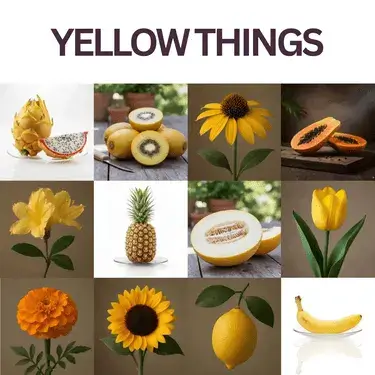
Related Articles: Pink Things, Red Things, Green Things, Purple Things